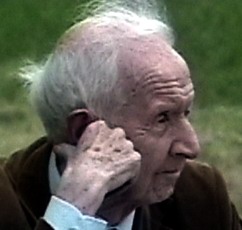
An intelligence quotient (IQ) is a total score derived from a set of standardised tests or subtests designed to assess human intelligence. The abbreviation "IQ" was coined by the psychologist William Stern for the German term Intelligenzquotient, his term for a scoring method for intelligence tests at University of Breslau he advocated in a 1912 book.

Mensa is the largest and oldest high-IQ society in the world. It is a non-profit organisation open to people who score at the 98th percentile or higher on a standardised, supervised IQ or other approved intelligence test. Mensa formally comprises national groups and the umbrella organisation Mensa International, with a registered office in Caythorpe, Lincolnshire, England, which is separate from the British Mensa office in Wolverhampton. The word mensa is Latin for 'table', as is symbolised in the organisation's logo, and was chosen to demonstrate the round-table nature of the organisation; the coming together of equals.
The Stanford–Binet Intelligence Scales is an individually administered intelligence test that was revised from the original Binet–Simon Scale by Alfred Binet and Théodore Simon. It is now in its fifth edition (SB5), which was released in 2003.
Marilyn vos Savant is an American magazine columnist who has the highest recorded intelligence quotient (IQ) in the Guinness Book of Records, a competitive category the publication has since retired. Since 1986, she has written "Ask Marilyn", a Parade magazine Sunday column wherein she solves puzzles and answers questions on various subjects, and which popularized the Monty Hall problem in 1990.
Intellectual giftedness is an intellectual ability significantly higher than average. It is a characteristic of children, variously defined, that motivates differences in school programming. It is thought to persist as a trait into adult life, with various consequences studied in longitudinal studies of giftedness over the last century. There is no generally agreed definition of giftedness for either children or adults, but most school placement decisions and most longitudinal studies over the course of individual lives have followed people with IQs in the top 2.5 percent of the population—that is, IQs above 130. Definitions of giftedness also vary across cultures.
The Wechsler Adult Intelligence Scale (WAIS) is an IQ test designed to measure intelligence and cognitive ability in adults and older adolescents.

The Triple Nine Society (TNS) is an international high IQ society for adults whose score on a standardized test demonstrates an IQ at or above the 99.9th percentile of the human population. The society recognizes scores from over 20 different tests of adult intelligence. The society was founded in 1978 and is a non-profit, 501(c)(7) organization incorporated in Virginia, USA. As of September 2022, it reports a member base of over 1,900 adults in 50 countries.
The Miller Analogies Test (MAT) is a standardized test used both for graduate school admissions in the United States and entrance to high I.Q. societies. Created and still published by Harcourt Assessment, the MAT consists of 120 questions in 60 minutes. Unlike other graduate school admissions exams such as the GRE, the Miller Analogies Test is verbal or computer based.

Lancelot Lionel Ware OBE was an English barrister and biochemist. He co-founded Mensa, the international society for intellectually gifted people, with the Australian barrister Roland Berrill in 1946. It was originally called the "High IQ Club".
Ronald K. Hoeflin is an American philosopher by profession, creator of the Mega and Titan intelligence tests. In 1988, Hoeflin won the American Philosophical Association's Rockefeller Prize for his article, "Theories of Truth: A Comprehensive Synthesis." His article argues for the interrelated nature of seven leading theories of truth. Hoeflin claims an IQ of 164, admitting his scores have ranged from 125 to 175, depending upon the cognitive abilities tapped into.
A high-IQ society is an organization that limits its membership to people who have attained a specified score on an IQ test, usually in the top two percent of the population or above. These may also be referred to as genius societies. The largest and oldest such society is Mensa International, which was founded by Roland Berrill and Lancelot Ware in 1946.
The Culture Fair Intelligence Test (CFIT) was created by Raymond Cattell in 1949 as an attempt to measure cognitive abilities devoid of sociocultural and environmental influences. Scholars have subsequently concluded that the attempt to construct measures of cognitive abilities devoid of the influences of experiential and cultural conditioning is a challenging one. Cattell proposed that general intelligence (g) comprises both fluid intelligence (Gf) and crystallized intelligence (Gc). Whereas Gf is biologically and constitutionally based, Gc is the actual level of a person's cognitive functioning, based on the augmentation of Gf through sociocultural and experiential learning.

Mental age is a concept related to intelligence. It looks at how a specific individual, at a specific age, performs intellectually, compared to average intellectual performance for that individual's actual chronological age (i.e. time elapsed since birth). The intellectual performance is based on performance in tests and live assessments by a psychologist. The score achieved by the individual is compared to the median average scores at various ages, and the mental age (x, say) is derived such that the individual's score equates to the average score at age x.
In statistics, a floor effect arises when a data-gathering instrument has a lower limit to the data values it can reliably specify. This lower limit is known as the "floor". The "floor effect" is one type of scale attenuation effect; the other scale attenuation effect is the "ceiling effect". Floor effects are occasionally encountered in psychological testing, when a test designed to estimate some psychological trait has a minimum standard score that may not distinguish some test-takers who differ in their responses on the test item content. Giving preschool children an IQ test designed for adults would likely show many of the test-takers with scores near the lowest standard score for adult test-takers. To indicate differences in current intellectual functioning among young children, IQ tests specifically for young children are developed, on which many test-takers can score well above the floor score. An IQ test designed to help assess intellectually disabled persons might intentionally be designed with easier item content and a lower floor score to better distinguish among individuals taking the test as part of an assessment process.

The Mega Society is a high IQ society open to people who have scored at the one-in-a-million level on a particular test of general intelligence, called the Mega Test, claimed to be able to discriminate at that level. It was founded in 1982 by Ronald K. Hoeflin to facilitate psychometric research.

IQ classification is the practice of categorizing human intelligence, as measured by intelligence quotient (IQ) tests, into categories such as "superior" or "average".
The Reynolds Intellectual Assessment Scales (RIAS) is an individually administered test of intelligence that includes a co-normed, supplemental measure of memory. It is appropriate for individuals ages 3–94.
The Woodcock–Johnson Tests of Cognitive Abilities is a set of intelligence tests first developed in 1977 by Richard Woodcock and Mary E. Bonner Johnson. It was revised in 1989, again in 2001, and most recently in 2014; this last version is commonly referred to as the WJ IV. They may be administered to children from age two right up to the oldest adults. The previous edition WJ III was praised for covering "a wide variety of cognitive skills".
The following outline is provided as an overview of and topical guide to human intelligence:

Intertel is a high-IQ society founded in 1966, that is open to those who have scored at or above the 99th percentile on one of various standardized tests of intelligence. It has been identified as one of the notable high-IQ societies established since the late 1960s with admissions requirements that are stricter and more exclusive than Mensa.








